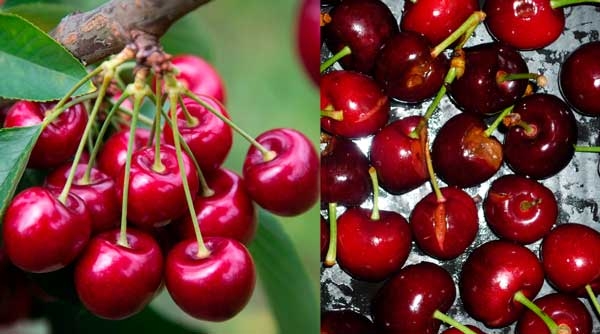Theoretical water balance model
Theoretical water balance model (cont from last month)
Both sources and pathways for water movement into the fruit can be in play at the same time. Water can move across gradients into the fruit from within the tree or from the fruit surface.
Both sources and pathways for water movement into the fruit can be in play at the same time. Water can move across gradients into the fruit from within the tree or from the fruit surface.
A paper presented at the last international symposium presented a theoretical water balance model that attempted to combine the pathways.
The study explored the various gradients for water movement recorded in published papers, and applied a model to explain how and when water would move, and what influenced those gradients.
This is a model and hasn’t been tested. It uses information from studies for different varieties from different climates, and includes field and laboratory work.
Transpiration is the key
Different scenarios (combinations of dry, cloudy, rainy days, with different temperature and humidity) were explored using the model.
The biggest influence on gradients and water movement—according to the model—is a lack of transpiration.
Hot days
On hot days, as humidity drops, there is expected to be a net loss of water from the fruit (with a resulting loss in size). This has been recorded in field trials.
The fruit recovers water status and size in the evening and overnight. As humidity decreases, loss of water from the fruit is decreased.
Cloudy days, high humidity
On cloudy days of high humidity (assuming the fruit surface is dry but the stem cavity is wet), the net water movement into the fruit is expected to be greater than the net loss, even at temperatures of 25C. Cracking can occur even when fruit is not getting wet.
If the stem cavity remained dry on these days, only at low temperature would net influx exceed net loss.
Rainy days
Influx of water was greatest on rainy days, at any temperature (a combination of influx from within the tree and across the surface).
Using this model it was expected that the critical uptake amount for cracking would be reached within two to four hours when the surface of the fruit was completely wet.
If the surface was dried, but the stem cavity remained wet, the time for cracking was extended to between three and seven hours.
Why are cherries so susceptible?
Cherries have a number of factors working against them, primarily that the cuticle is very thin compared to other fruit.
The cuticle gets stretched as the fruit enlarges and is under a lot of strain. Micro-cracks form easily and increase the permeability of fruit to water.
In addition, the xylem component of the vascular system stays functional within the stem until the fruit is ready to harvest—so there is always an open door to water from the root system.
Varietal differences
Some varieties are more susceptible than others, and some seem to have a preference for particular crack types. It’s worthwhile getting to know how each of your varieties respond to rainfall.
New findings
New work is being published all the time about cracking.
The leakage of malic acid from cells when fruit is wet has been highlighted as a contributing factor, and we now know that the flesh of the fruit has a greater demand for water than the skin.
Headway into the genetics involved in cracking is also being made now that different pathways and mechanisms for cracking has been shown.
See this article in Tree Fruit July 2017




















